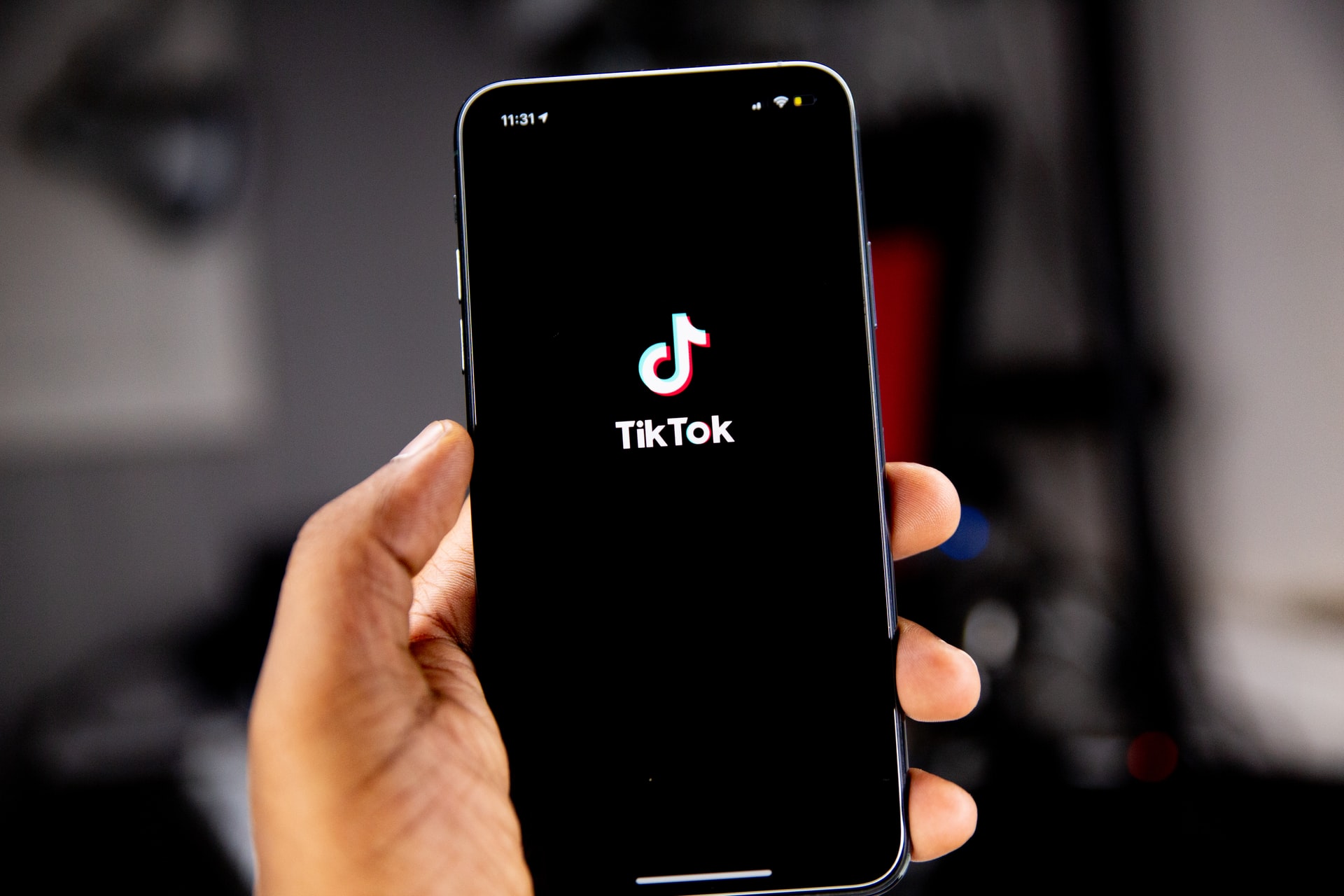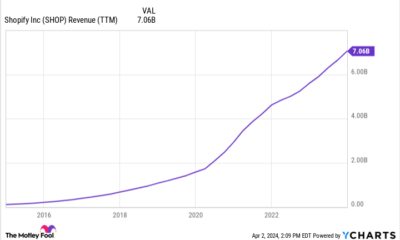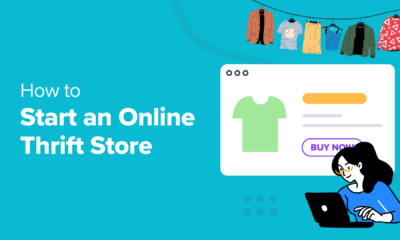MARKETING
Tips to Market and Grow Your Shopify Store on TikTok

The e-commerce and retail industry is constantly evolving, with new trends emerging every day. One of the most recent ones combines marketing directly with shopping, called social commerce. Total annual social commerce sales will reach over $50 billion by the end of 2023, data by eMarketer.
Which leads us to TikTok, a popular social media platform for posting short-form video clips and creative content. TikTok is launching new features and collaborations favorable for e-commerce brands wanting to promote their business through social shopping, live commerce, and influencer marketing.
The platform, launched initially as a social app, appeals to creators and viewers as well as e-commerce businesses worldwide. After all, promoting a wide variety of products through highly engaging content sounds like an excellent idea, doesn’t it?
TikTok investing heavily in marketing features
TikTok is investing heavily in its new marketing avenues. According to a report by the media outlet LatePost in China, TikTok’s marketing revenue was $4 billion in 2021, with a goal to nearly triple this to $12 billion revenue share by the end of 2022. What is more, TikTok nearly doubled its size in terms of its advertising and product teams in 2021.
With the increasing popularity of influencer marketing, social commerce, and live commerce, TikTok offers limitless opportunities to creative e-commerce marketers and shouldn’t be ignored in 2022 and going forward. Let’s have a brief look at what TikTok is, then dive into some tips and best practices for marketing your brand on the platform.
What is TikTok?
TikTok app, launched by ByteDance in China in 2016, is a social platform that allows posting short-form videos ranging from 15 seconds to 3 minutes, enabling easy video editing and adding filters and music.
The video-sharing social platform has been especially appealing to Gen-Z and Millennials. As of September 2021, nearly 50% of users were below 30 and fell into the 10-29 age range, according to Statista.
TikTok app is where e-commerce businesses, content creators, and influencers merge and come together to express their style, trends, share experiences, or promote brand awareness. That is a significant reason why, similarly to Instagram and Facebook, TikTok is starting to emphasize its e-commerce marketing features and activities.
While these features are similar to other major social platforms, several differentiating factors make TikTok marketing unique and have its advantages.
Unlike other apps and platforms, TikTok has a specific discovery algorithm that gives each clip an equal chance for virality, whether the brand or person is new to the platform or how popular the creator is. Of course, it does help to have already amassed a wide following or opt for paid campaigns, but it doesn’t only account for that; all users have a chance to go viral if their content is good.
TikTok and Shopify integration
In 2021, TikTok launched a Shopify integration that allows sellers on the Shopify e-commerce platform to sync their products directly with the TikTok Business account. It creates a separate “storefront” on TikTok and displays all product catalogs sold on the brand’s online store directly
to their online shop and allows a direct check-out without ever leaving the app.
They realized the potential of social commerce and the growing live commerce trend. TikTok is the perfect platform for that. TikTok and Shopify revealed their partnership in October 2021 and is currently available for the US, Canada, and UK merchants; it has announced that it will be launched in other countries soon.
Their e-commerce strategy partnership allows merchants to create and manage campaigns directly on TikTok business accounts. TikTok hopes to attract brands and new users with its new features and e-commerce capabilities.
TikTok generates revenue primarily through: advertising, in-app purchases, and e-commerce features and comes with four different ad types: in-feed ads, brand takeovers, top views, branded hashtags, and branded effects.

TikTok e-commerce marketing tips
Even though the social media landscape is changing, with tweaks in algorithms, marketing campaign types, and rising costs, it is the place for brands and retailers to showcase their products, create more awareness, and increase sales.
What is more, brand storytelling is becoming increasingly important. Storytelling can have a tremendous and direct impact on the increase in sales and conversions. One survey found that 55% of consumers are more likely to buy if the brand has a story behind it. Social commerce is the perfect way to create and promote brand stories and directly engage with customers.
Even though TikTok has changed its algorithms over the years, one thing remains constant – TikTok is and will remain a go-to marketing platform for the years to come. TikTok is an excellent platform for brands to create trust and connect with their customers, increase loyalty, grow sales, and actively show their brand story through high-quality and engaging content.
So, how to market your e-commerce brand on TikTok? Here are some tips to incorporate to your TikTok marketing strategy::
1. Don’t sell, entertain
As the whole concept of TikTok is entertaining its users, keeping them engaged and on the platform as long as possible, brands and retailers should think about ways to engage the consumer rather than directly sell to them.
As an example, let’s take the sportswear brand GymShark. They regularly post entertaining content revolving around gym and training with a twist of humor on TikTok using relevant influencers in the sports community and encourage user-generated content (USG) through various hashtag challenges.

It isn’t about posting and pushing one paid ad. It is about creating the whole story around your brand so customers can follow your story. Having loyal fans on TikTok who love the store is a great way to build trust, loyalty, and engagement and grow sales simultaneously.
2. Be your authentic self
Even though TikTok’s algorithm isn’t only to favor the accounts and creators with the most followers but also great content, it is crucial to get it right. And to create good content, it is important to stay authentic on the platform.
With so much competition and noise, it is crucial to know how to relate to the audience to stand out. Content that comes across strongly like a sales pitch or is just another paid product ad won’t get you far.
For example, let’s take a look at an independent accessories label XXL Scrunchie from Canada, active on TikTok. They regularly post authentic content about their family production process, “how-to” videos, and general business day-to-day business that brings their customers in and makes them feel like a part of the brand, which increases trust and loyalty.

Figure out how your ideal customer and target audience would want to see and engage them. For example, test the algorithm on what else (other content) comes up in the feed by scrolling through the feeds from your brand’s point of view; this can give more insights into what kind of content appeals to the target users.
3. Live commerce – use TikTok Live feature
In 2016, China’s e-commerce behemoth Alibaba launched Taobao Live on their online shopping app Taobao, where influencers or key opinion leaders (KOLs) present various products on live-stream videos, marking a new chapter for social commerce.
Live commerce connects online broadcasts directly to e-commerce stores, allowing customers to purchase products in the videos while watching the stream, either through SMS messages or in-app messaging services. These live streams are hosted through specialized livestream shopping platforms such as ShopShops or Talkshoplive or, in this case, social media platforms Instagram, Facebook, and TikTok.
TikTok launched their first live-stream event called “Holiday Shop-Along Spectacular” in December 2021, a collaboration between Walmart and TikTok.

Ever since, the live stream shopping feature has been favored by several other e-commerce brands, including beauty brands such as E.l.f, Too Faced, and Milk Makeup, or luxury designers including Saint Laurent, JW Anderson, and Louis Vuitton.
4. Engage in conversations with your customers
To truly connect and engage with your audience, consider participating in conversations with them by replying to the comments and questions underneath your posts, as it can grow loyalty and brand trust. TikTok comments are a great place to answer any questions, have an open conversation, or explain how your products and services work.
As your responses are tagged with a “Creator badge” next to your username, it is quite clear when you, an expert in the field, have responded, liked the comment, or engaged in the conversation. When you engage with a viewer’s comments, they automatically get a notification “Liked by Creator” pop up on the app, instantly giving it a personal touch and making them feel acknowledged.
5. Follow the hashtag challenge trends
Checking the trending hashtags section is a great way to get a feel for what is popular at the time. Of course, not all trends, or perhaps none, will match one-on-one to your brands’ target audience. However, it could act as an inspiration to your TikTok content marketing strategy.

While drafting new posts, keep an eye on what is trending and use trending hashtags to appear in front of a larger audience. However, don’t use a popular hashtag or hashtags with your content just because they are trending; always make sure they are also relevant to the content you post; otherwise, it might appear irrelevant and not interesting for the viewing audience.
6. Monitor and implement new features
A recent news post on Techcrunch from January 2022 announced that TikTok is launching several new features. These include Bitmoji-like avatars, keyword filtering on the “For You” page, group chats, audio-only live streaming, screen sharing during live streams, and subscription features, allowing subscriber-only comment sections.
TikTok is coming up with new features to keep users engaged, and e-commerce brands can leverage these to do the same. While the algorithm is kept a secret, tracking what’s new in terms of possibilities and new features can enhance the user experience to keep your feed fresh and engaging, attract new followers, and maintain existing ones. Implementing new features helps to stay ahead of the competition.
7. Post regularly
Like other major social media platforms with several commerce features, Instagram and Facebook, TikTok has perfect posting times for maximum performance results and ROI.
Following a comprehensive study conducted by Influencer Marketing Hub, who analyzed over 100,000 TikTok posts to see a pattern for best posting times:
Monday: 6.00 am, 10.00 am, or 10.00 pm
Tuesday: 2 am, 4 am, or 9 am
Wednesday: 7 am, 8 am, or 11 pm
Thursday: 9 am, 12 am, or 7 pm
Friday: 5 am, 1 pm, or 3 pm
Saturday: 11 am, 7 pm, or 8 pm
Sunday: 7 am, 8 am, or 4 pm
Consider that TikTok often swallows users to their feeds, so users are more active before or after work hours, as we can also see from the pattern above. And most importantly, also check and consider when your followers engage most with your content, it is a trial and error process.
Grow your e-commerce with social and live commerce
Social commerce is exploding, and it seems like the next big thing in the US, and Europe is live commerce. TikTok, among other social media platforms, offers both of these features and possibilities for brands and retailers to grow their sales and customer base.
TikTok’s expansion to several new online shopping features comes when e-commerce trends continue to explore new areas. Whereas Instagram and Facebook have been among the first to jump on the social media shopping bandwagon, TikTok is catching up to incorporate these new features into business accounts.
In 2021, Gen-Z represented a collective purchasing power of $150 billion, leaving brands to understand their unique shopping behaviors. TikTok can offer the right audience, analytical capabilities to see what they like, and excellent features such as in-app purchases and live stream shopping to catch the customers at the right time.
Source link
MARKETING
Tinuiti Marketing Analytics Recognized by Forrester

Rapid Media Mix Modeling and Proprietary Tech Transform Brand Performance
Tinuiti, the largest independent full-funnel performance marketing agency, has been included in a recent Forrester Research report titled, “The Marketing Analytics Landscape, Q2 2024.” This report comprehensively overviews marketing analytics markets, use cases, and capabilities. B2C marketing leaders can use this research by Principal Analyst Tina Moffett to understand the intersection of marketing analytics capabilities and use cases to determine the vendor or service provider best positioned for their analytics and insights needs. Moffett describes the top marketing analytics markets as advertising agencies, marketing dashboards and business intelligence tools, marketing measurement and optimization platforms and service providers, and media analytics tools.
As an advertising agency, we believe Tinuiti is uniquely positioned to manage advertising campaigns for brands including buying, targeting, and measurement. Our proprietary measurement technology, Bliss Point by Tinuiti, allows us to measure the optimal level of investment to maximize impact and efficiency. According to the Forrester report, “only 30% of B2C marketing decision-makers say their organization uses marketing or media mix modeling (MMM),” so having a partner that knows, embraces, and utilizes MMM is important. As Tina astutely explains, data-driven agencies have amplified their marketing analytics competencies with data science expertise; and proprietary tools; and tailored their marketing analytics techniques based on industry, business, and data challenges.
Our Rapid Media Mix Modeling sets a new standard in the market with its exceptional speed, precision, and transparency. Our patented tech includes Rapid Media Mix Modeling, Always-on Incrementality, Brand Equity, Creative Insights, and Forecasting – it will get you to your Marketing Bliss Point in each channel, across your entire media mix, and your overall brand performance.
As a marketing leader you may ask yourself:
- How much of our marketing budget should we allocate to driving store traffic versus e-commerce traffic?
- How should we allocate our budget by channel to generate the most traffic and revenue possible?
- How many customers did we acquire in a specific region with our media spend?
- What is the impact of seasonality on our media mix?
- How should we adjust our budget accordingly?
- What is the optimal marketing channel mix to maximize brand awareness?
These are just a few of the questions that Bliss Point by Tinuiti can help you answer.
Learn more about our customer-obsessed, product-enabled, and fully integrated approach and how we’ve helped fuel full-funnel outcomes for the world’s most digital-forward brands like Poppi & Toms.
The Landscape report is available online to Forrester customers or for purchase here.
MARKETING
Ecommerce evolution: Blurring the lines between B2B and B2C

Understanding convergence
B2B and B2C ecommerce are two distinct models of online selling. B2B ecommerce is between businesses, such as wholesalers, distributors, and manufacturers. B2C ecommerce refers to transactions between businesses like retailers and consumer brands, directly to individual shoppers.
However, in recent years, the boundaries between these two models have started to fade. This is known as the convergence between B2B and B2C ecommerce and how they are becoming more similar and integrated.
Source: White Paper: The evolution of the B2B Consumer Buyer (ClientPoint, Jan 2024)
What’s driving this change?
Ever increasing customer expectations
Customers today expect the same level of convenience, speed, and personalization in their B2B transactions as they do in their B2C interactions. B2B buyers are increasingly influenced by their B2C experiences. They want research, compare, and purchase products online, seamlessly transitioning between devices and channels. They also prefer to research and purchase online, using multiple devices and channels.
Forrester, 68% of buyers prefer to research on their own, online . Customers today expect the same level of convenience, speed, and personalization in their B2B transactions as they do in their B2C interactions. B2B buyers are increasingly influenced by their B2C experiences. They want research, compare, and purchase products online, seamlessly transitioning between devices and channels. They also prefer to research and purchase online, using multiple devices and channels
Technology and omnichannel strategies
Technology enables B2B and B2C ecommerce platforms to offer more features and functionalities, such as mobile optimization, chatbots, AI, and augmented reality. Omnichannel strategies allow B2B and B2C ecommerce businesses to provide a seamless and consistent customer experience across different touchpoints, such as websites, social media, email, and physical stores.
However, with every great leap forward comes its own set of challenges. The convergence of B2B and B2C markets means increased competition. Businesses now not only have to compete with their traditional rivals, but also with new entrants and disruptors from different sectors. For example, Amazon Business, a B2B ecommerce platform, has become a major threat to many B2B ecommerce businesses, as it offers a wide range of products, low prices, and fast delivery
“Amazon Business has proven that B2B ecommerce can leverage popular B2C-like functionality” argues Joe Albrecht, CEO / Managing Partner, Xngage. . With features like Subscribe-and-Save (auto-replenishment), one-click buying, and curated assortments by job role or work location, they make it easy for B2B buyers to go to their website and never leave. Plus, with exceptional customer service and promotional incentives like Amazon Business Prime Days, they have created a reinforcing loyalty loop.
And yet, according to Barron’s, Amazon Business is only expected to capture 1.5% of the $5.7 Trillion addressable business market by 2025. If other B2B companies can truly become digital-first organizations, they can compete and win in this fragmented space, too.”
If other B2B companies can truly become digital-first organizations, they can also compete and win in this fragmented space
Joe AlbrechtCEO/Managing Partner, XNGAGE
Increasing complexity
Another challenge is the increased complexity and cost of managing a converging ecommerce business. Businesses have to deal with different customer segments, requirements, and expectations, which may require different strategies, processes, and systems. For instance, B2B ecommerce businesses may have to handle more complex transactions, such as bulk orders, contract negotiations, and invoicing, while B2C ecommerce businesses may have to handle more customer service, returns, and loyalty programs. Moreover, B2B and B2C ecommerce businesses must invest in technology and infrastructure to support their convergence efforts, which may increase their operational and maintenance costs.
How to win
Here are a few ways companies can get ahead of the game:
Adopt B2C-like features in B2B platforms
User-friendly design, easy navigation, product reviews, personalization, recommendations, and ratings can help B2B ecommerce businesses to attract and retain more customers, as well as to increase their conversion and retention rates.
According to McKinsey, ecommerce businesses that offer B2C-like features like personalization can increase their revenues by 15% and reduce their costs by 20%. You can do this through personalization of your website with tools like Product Recommendations that help suggest related products to increase sales.
Focus on personalization and customer experience
B2B and B2C ecommerce businesses need to understand their customers’ needs, preferences, and behaviors, and tailor their offerings and interactions accordingly. Personalization and customer experience can help B2B and B2C ecommerce businesses to increase customer satisfaction, loyalty, and advocacy, as well as to improve their brand reputation and competitive advantage. According to a Salesforce report, 88% of customers say that the experience a company provides is as important as its products or services.
Market based on customer insights
Data and analytics can help B2B and B2C ecommerce businesses to gain insights into their customers, markets, competitors, and performance, and to optimize their strategies and operations accordingly. Data and analytics can also help B2B and B2C ecommerce businesses to identify new opportunities, trends, and innovations, and to anticipate and respond to customer needs and expectations. According to McKinsey, data-driven organizations are 23 times more likely to acquire customers, six times more likely to retain customers, and 19 times more likely to be profitable.
What’s next?
The convergence of B2B and B2C ecommerce is not a temporary phenomenon, but a long-term trend that will continue to shape the future of ecommerce. According to Statista, the global B2B ecommerce market is expected to reach $20.9 trillion by 2027, surpassing the B2C ecommerce market, which is expected to reach $10.5 trillion by 2027. Moreover, the report predicts that the convergence of B2B and B2C ecommerce will create new business models, such as B2B2C, B2A (business to anyone), and C2B (consumer to business).
Therefore, B2B and B2C ecommerce businesses need to prepare for the converging ecommerce landscape and take advantage of the opportunities and challenges it presents. Here are some recommendations for B2B and B2C ecommerce businesses to navigate the converging landscape:
- Conduct a thorough analysis of your customers, competitors, and market, and identify the gaps and opportunities for convergence.
- Develop a clear vision and strategy for convergence, and align your goals, objectives, and metrics with it.
- Invest in technology and infrastructure that can support your convergence efforts, such as cloud, mobile, AI, and omnichannel platforms.
- Implement B2C-like features in your B2B platforms, and vice versa, to enhance your customer experience and satisfaction.
- Personalize your offerings and interactions with your customers, and provide them with relevant and valuable content and solutions.
- Leverage data and analytics to optimize your performance and decision making, and to innovate and differentiate your business.
- Collaborate and partner with other B2B and B2C ecommerce businesses, as well as with other stakeholders, such as suppliers, distributors, and customers, to create value and synergy.
- Monitor and evaluate your convergence efforts, and adapt and improve them as needed.
By following these recommendations, B2B and B2C ecommerce businesses can bridge the gap between their models and create a more integrated and seamless ecommerce experience for their customers and themselves.
MARKETING
Streamlining Processes for Increased Efficiency and Results

How can businesses succeed nowadays when technology rules? With competition getting tougher and customers changing their preferences often, it’s a challenge. But using marketing automation can help make things easier and get better results. And in the future, it’s going to be even more important for all kinds of businesses.
So, let’s discuss how businesses can leverage marketing automation to stay ahead and thrive.
Benefits of automation marketing automation to boost your efforts
First, let’s explore the benefits of marketing automation to supercharge your efforts:
Marketing automation simplifies repetitive tasks, saving time and effort.
With automated workflows, processes become more efficient, leading to better productivity. For instance, automation not only streamlines tasks like email campaigns but also optimizes website speed, ensuring a seamless user experience. A faster website not only enhances customer satisfaction but also positively impacts search engine rankings, driving more organic traffic and ultimately boosting conversions.
Automation allows for precise targeting, reaching the right audience with personalized messages.
With automated workflows, processes become more efficient, leading to better productivity. A great example of automated workflow is Pipedrive & WhatsApp Integration in which an automated welcome message pops up on their WhatsApp
within seconds once a potential customer expresses interest in your business.
Increases ROI
By optimizing campaigns and reducing manual labor, automation can significantly improve return on investment.
Leveraging automation enables businesses to scale their marketing efforts effectively, driving growth and success. Additionally, incorporating lead scoring into automated marketing processes can streamline the identification of high-potential prospects, further optimizing resource allocation and maximizing conversion rates.
Harnessing the power of marketing automation can revolutionize your marketing strategy, leading to increased efficiency, higher returns, and sustainable growth in today’s competitive market. So, why wait? Start automating your marketing efforts today and propel your business to new heights, moreover if you have just learned ways on how to create an online business
How marketing automation can simplify operations and increase efficiency
Understanding the Change
Marketing automation has evolved significantly over time, from basic email marketing campaigns to sophisticated platforms that can manage entire marketing strategies. This progress has been fueled by advances in technology, particularly artificial intelligence (AI) and machine learning, making automation smarter and more adaptable.
One of the main reasons for this shift is the vast amount of data available to marketers today. From understanding customer demographics to analyzing behavior, the sheer volume of data is staggering. Marketing automation platforms use this data to create highly personalized and targeted campaigns, allowing businesses to connect with their audience on a deeper level.
The Emergence of AI-Powered Automation
In the future, AI-powered automation will play an even bigger role in marketing strategies. AI algorithms can analyze huge amounts of data in real-time, helping marketers identify trends, predict consumer behavior, and optimize campaigns as they go. This agility and responsiveness are crucial in today’s fast-moving digital world, where opportunities come and go in the blink of an eye. For example, we’re witnessing the rise of AI-based tools from AI website builders, to AI logo generators and even more, showing that we’re competing with time and efficiency.
Combining AI-powered automation with WordPress management services streamlines marketing efforts, enabling quick adaptation to changing trends and efficient management of online presence.
Moreover, AI can take care of routine tasks like content creation, scheduling, and testing, giving marketers more time to focus on strategic activities. By automating these repetitive tasks, businesses can work more efficiently, leading to better outcomes. AI can create social media ads tailored to specific demographics and preferences, ensuring that the content resonates with the target audience. With the help of an AI ad maker tool, businesses can efficiently produce high-quality advertisements that drive engagement and conversions across various social media platforms.
Personalization on a Large Scale
Personalization has always been important in marketing, and automation is making it possible on a larger scale. By using AI and machine learning, marketers can create tailored experiences for each customer based on their preferences, behaviors, and past interactions with the brand.
This level of personalization not only boosts customer satisfaction but also increases engagement and loyalty. When consumers feel understood and valued, they are more likely to become loyal customers and brand advocates. As automation technology continues to evolve, we can expect personalization to become even more advanced, enabling businesses to forge deeper connections with their audience. As your company has tiny homes for sale California, personalized experiences will ensure each customer finds their perfect fit, fostering lasting connections.
Integration Across Channels
Another trend shaping the future of marketing automation is the integration of multiple channels into a cohesive strategy. Today’s consumers interact with brands across various touchpoints, from social media and email to websites and mobile apps. Marketing automation platforms that can seamlessly integrate these channels and deliver consistent messaging will have a competitive edge. When creating a comparison website it’s important to ensure that the platform effectively aggregates data from diverse sources and presents it in a user-friendly manner, empowering consumers to make informed decisions.
Omni-channel integration not only betters the customer experience but also provides marketers with a comprehensive view of the customer journey. By tracking interactions across channels, businesses can gain valuable insights into how consumers engage with their brand, allowing them to refine their marketing strategies for maximum impact. Lastly, integrating SEO services into omni-channel strategies boosts visibility and helps businesses better understand and engage with their customers across different platforms.
The Human Element
While automation offers many benefits, it’s crucial not to overlook the human aspect of marketing. Despite advances in AI and machine learning, there are still elements of marketing that require human creativity, empathy, and strategic thinking.
Successful marketing automation strikes a balance between technology and human expertise. By using automation to handle routine tasks and data analysis, marketers can focus on what they do best – storytelling, building relationships, and driving innovation.
Conclusion
The future of marketing automation looks promising, offering improved efficiency and results for businesses of all sizes.
As AI continues to advance and consumer expectations change, automation will play an increasingly vital role in keeping businesses competitive.
By embracing automation technologies, marketers can simplify processes, deliver more personalized experiences, and ultimately, achieve their business goals more effectively than ever before.
-

 SEO7 days ago
SEO7 days agoGoogle Limits News Links In California Over Proposed ‘Link Tax’ Law
-

 SEARCHENGINES6 days ago
SEARCHENGINES6 days agoGoogle Core Update Volatility, Helpful Content Update Gone, Dangerous Google Search Results & Google Ads Confusion
-
SEARCHENGINES7 days ago
Daily Search Forum Recap: April 12, 2024
-

 SEO6 days ago
SEO6 days ago10 Paid Search & PPC Planning Best Practices
-

 MARKETING6 days ago
MARKETING6 days ago2 Ways to Take Back the Power in Your Business: Part 2
-

 MARKETING5 days ago
MARKETING5 days ago5 Psychological Tactics to Write Better Emails
-

 SEARCHENGINES5 days ago
SEARCHENGINES5 days agoWeekend Google Core Ranking Volatility
-

 PPC6 days ago
PPC6 days agoCritical Display Error in Brand Safety Metrics On Twitter/X Corrected















You must be logged in to post a comment Login